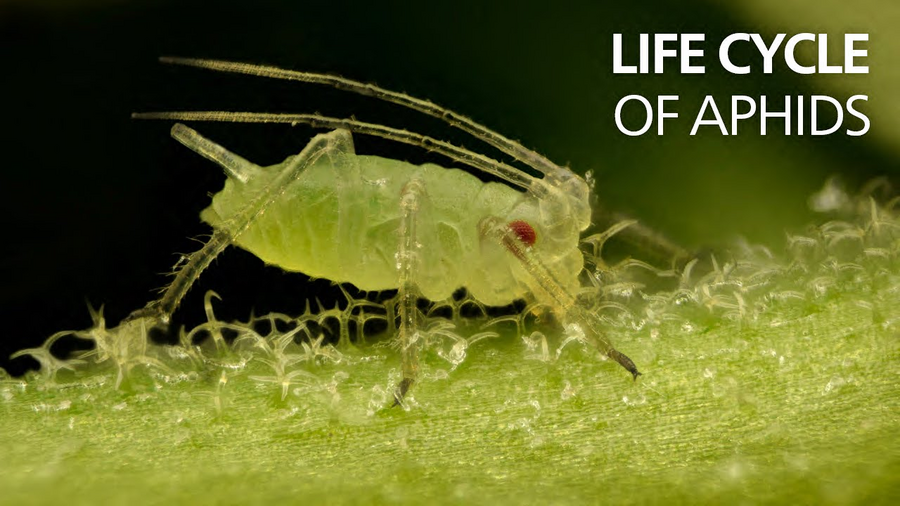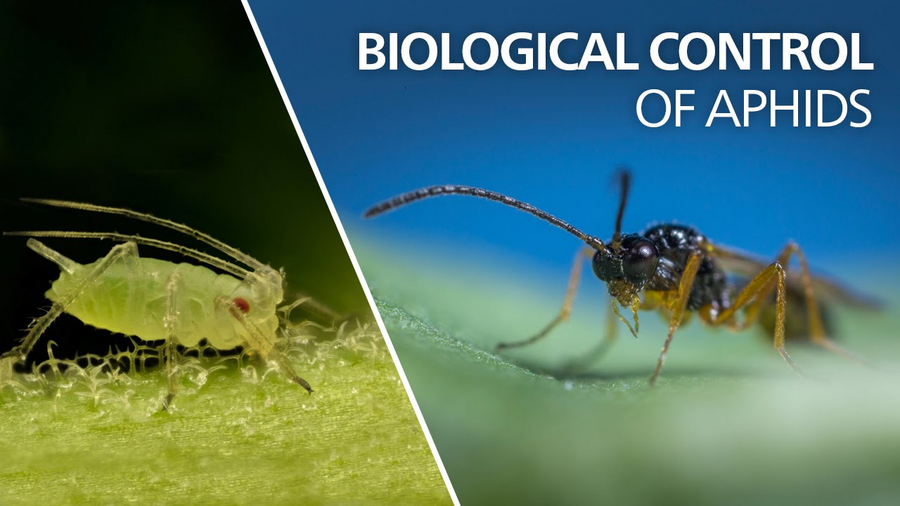What are aphids?
Aphids are small, soft-bodied insects that belong to the superfamily Aphidoidea. There are over 4,000 species of aphids that have been described, and they can be found in a variety of habitats throughout the world. Aphids form a single, very large group of insects: the super- family Aphidoidea, belonging to the order Hemiptera. The aphids discussed here all belong to the family Aphididae, a family containing many species that cause damage in cultivated crops.
Aphids feed on the sap of plants using their piercing-sucking mouthparts. They damage plants by causing stunting growth, curling leaves, and transmitting plant viruses. Some species of aphids are also known to excrete honeydew, a sticky, sugary substance that can attract other insects and promote the growth of sooty mold.
Aphids life cycle
Aphids have a complex life cycle, with both winged and wingless forms of adults of the same species developing, depending on the conditions. Wingless adult aphids are known as apterous, and winged adults as alate. Alate aphids have two pairs of wings, one of which is much larger than the other.
For a large part of the season an aphid population consists of viviparous females. As reproduction is asexual, the progeny of a single female is genetically identical to the mother. In other words, they are clones. Because there is no genetic recombination, different characteristics, such as colour forms, or resistance to pesticides, remain unchanged and unsorted. The young aphids are born as developed nymphs and begin to feed instantly on plant sap. They grow rapidly and moult four times before becoming adult, with the conspicuous white cuticles, shed during each of these moults, betraying their presence in the crop.
There are two types of aphid species: those that change to other host plants in the winter, and those species that do not. Species that alternate between host plants reproduce asexually on their summer host plant, migrating to their winter host plant in autumn, where they reproduce sexually and lay eggs that overwinter. The summer host plants are either herbaceous or woody, while the winter host plants are hardy, woody perennials. Aphids that do not alternate between host plants also mate in the autumn and lay eggs which overwinter. Where mating occurs and eggs are laid, the life cycle is termed holocyclic (complete). In greenhouses, however, the alternation of host plant and egg-laying may not take place. In this case, reproduction continues through the winter by parthenogenesis, with viviparous unfertilized females continuing to produce new generations of females. This is known as an anholocyclic (incomplete) life cycle. However, in some greenhouse crops with very low winter temperatures (e.g. strawberries), aphid eggs have been observed.
Recognize aphids
Aphids can be identified by the following characteristics:
- Size and shape: Aphids are small, soft-bodied insects that are usually less than 6 mm in length. They have a pear-shaped body with long antennae and two tube-like structures called tubercles on their rear end.
- Color: Aphids can be a variety of colors, including green, yellow, black, brown, pink, or red, depending on the species and their stage of development. Some species may have distinctive markings or stripes on their bodies.
- Movement: Aphids are slow-moving and tend to cluster on the undersides of leaves, where they feed on plant sap. They may also be found on stems, buds, flowers and fruit.
- Damage: Aphids can cause damage to leaves, stems, and flowers by piercing the plant tissue and sucking out the sap. This can result in stunted growth, curling or distortion of the leaves, yellowing, or discoloration. They may also excrete a sugary substance called honeydew, which can attract other insects and lead to the growth of a black sooty mold.
Aphids damage
Aphids can cause damage to plants in several ways, and the damage can vary depending on the species of aphid and the type of plant being attacked. The following are common signs of aphid damage:
- Yellowing or distorted leaves: Aphids feed on the sap of plants, which can cause the leaves to turn yellow or become distorted. The damage is often more pronounced on the younger leaves of the plant.
- Stunted growth: Heavy infestations of aphids can cause plants to grow more slowly or become stunted. This is because the insects are drawing nutrients away from the plant as they feed on its sap.
- Sticky residue: Aphids excrete a sugary substance called honeydew, which can coat the leaves and stems of infested plants.
- Sooty mold: Honeydew can also promote the growth of a black, sooty mold that can cover the leaves and stems of infested plants. This mold can further reduce the plant's ability to photosynthesize and grow.
- Wilting or death of plant: In severe cases, aphid infestations can cause plants to wilt and die. This can occur when the insects are present in very large numbers and are feeding heavily on the plant.
- Curling or twisting of leaves: Some species of aphids can cause leaves to curl or twist as they feed on the plant sap.
Aphids damage
How to prevent aphids
To prevent aphid infestations in crops, you can take several preventative measures:
Practice good crop hygiene
Keep the growing area clean and free from weeds, debris, and plant residues that can harbor aphids. Regularly remove and dispose of any infested plant material.
Monitor your crops regularly
Inspect plants for early signs of aphids, such as curled leaves, distorted growth, or the presence of the insects themselves. Early detection enables prompt action to prevent infestations from spreading. Sticky traps can be strategically placed throughout the growing area to capture flying aphids and provide an indication of their population levels.
By implementing these preventative measures, you can significantly reduce the risk of aphid infestations and maintain healthier crops.
Aphid control videos
Take a look at the video or go to our Youtube channel to see our aphid control products in action.

